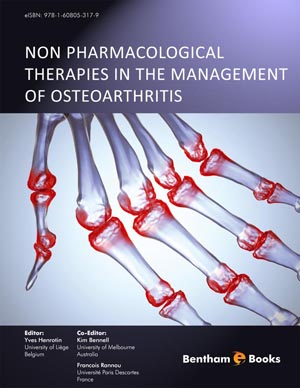Abstract
This chapter covers the role of two commonly used modalities, land-based exercise and manual therapy, in the management of OA. It summarises available evidence for the effectiveness of these modalities and discusses practical issues related to their application in the clinical setting. Exercise is the cornerstone of management for OA and is recommended by all clinical guidelines. There is strong evidence to show short-term beneficial effects of exercise on pain and function for knee OA. While the type of exercise does not seem to influence treatment outcome, a combination of strengthening, aerobic and functional exercise is recommended. As therapist contact appears to improve outcomes, a period of supervised exercise delivered either individually or in a group setting followed by a home program may be most appropriate. Strategies to facilitate long-term adherence to exercise are needed given that the benefits of exercise decline over time principally due to a lack of adherence. Given the limited research into the effects of exercise for hip and hand OA, further studies are needed at these sites. Manual therapy is delivered by health practitioners from a range of disciplines and may include techniques such as manipulation, mobilisation, stretching, myofascial techniques and massage. Limited research suggests that manual therapy techniques may be beneficial in the management of large joint OA particularly at the hip and as an adjunct to core treatment strategies of exercise and education. No studies have investigated the effects of manual therapy techniques, other than massage, for OA of the hand so the benefits for this patient group are largely unknown.
Keywords: Osteoarthritis, exercises, manual therapy.

















